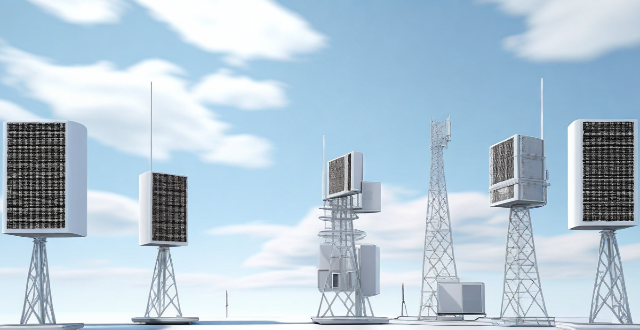Communication base stations, or cell towers, are vital for wireless networks. They consist of antennas, transceivers, controllers, and power supplies to transmit and receive signals. The process includes encoding user data, modulating it onto RF waves, transmitting via antenna arrays, receiving by mobile devices, and decoding back to the original format. Coverage areas depend on antenna height, power, and topography, while handover processes ensure seamless transitions between base stations. Connected to a core network via backhaul links, base stations enable voice calls, messages, and data services, adapting to technological advancements to meet increasing demands.

How Do Communication Base Stations Work?
Introduction
Communication base stations, also known as cell towers or mobile phone masts, are essential components of wireless communication networks. They allow mobile devices to connect with the network, enabling voice calls, text messages, and data transfers. In this article, we will explore how communication base stations work and their role in modern telecommunications.
Main Sections
1. Structure of a Base Station
A typical base station consists of several key components:
- Antenna Array: Responsible for transmitting and receiving radio signals to and from mobile devices.
- Transceiver: Converts electrical signals into radio waves and vice versa.
- Controller: Manages the operation of the base station, including signal processing and resource allocation.
- Power Supply: Provides energy to the entire system.
2. Radio Frequency (RF) Transmission
The process of communication between a base station and a mobile device involves the following steps:
1. Signal Encoding: The user's voice or data is converted into digital signals.
2. Modulation: These digital signals are then modulated onto an RF carrier wave.
3. Transmission: The modulated signal is sent through the air by the base station's antenna array.
4. Reception: The mobile device receives the signal and demodulates it back into digital form.
5. Decoding: Finally, the digital signal is converted back into its original voice or data format for the user.
3. Signal Coverage Area
Each base station has a specific coverage area, determined by factors such as:
- Antenna Height and Gain: Higher antennas generally have larger coverage areas due to line-of-sight propagation.
- Transmitter Power: Stronger transmitter power can extend the range of the base station.
- Topography: Hills, buildings, and other obstacles can affect signal strength and coverage.
4. Handover Process
As users move around, their devices must switch from one base station to another without interrupting service. This process is called handover or handoff:
1. Signal Strength Measurement: Mobile devices constantly monitor the signal strength of nearby base stations.
2. Decision Making: When another base station's signal becomes stronger than the current one, the network initiates a handover.
3. Connection Switching: The network seamlessly transfers the ongoing call or data session to the new base station.
4. Resource Reallocation: The new base station allocates necessary resources to continue supporting the user's communication needs.
5. Network Connectivity
Base stations are connected to a larger network infrastructure that includes:
- Backhaul Links: These are high-capacity connections that transport data between base stations and core network elements like switches and routers.
- Core Network: Responsible for managing calls, routing data, and interconnecting with other networks like the internet or PSTN (Public Switched Telephone Network).
Conclusion
Communication base stations play a crucial role in modern wireless communications by providing reliable connectivity to mobile devices within their coverage areas. Through careful design and maintenance, these stations ensure that voice calls, text messages, and data services are available to users wherever they go. As technology advances, base stations continue to evolve, offering faster speeds and greater capacity to meet the growing demands of our connected world.